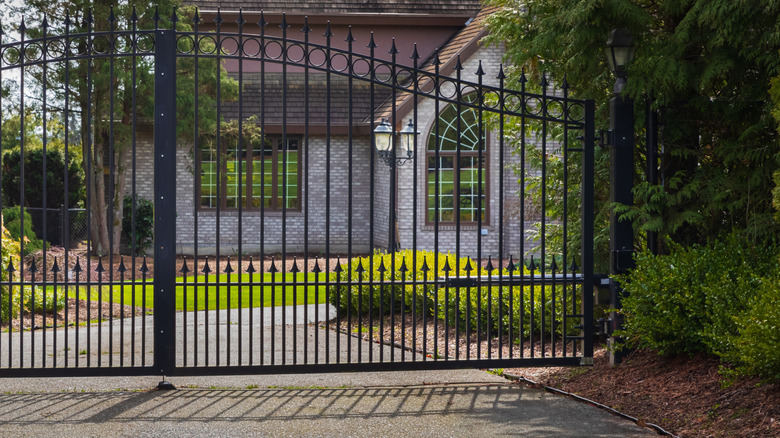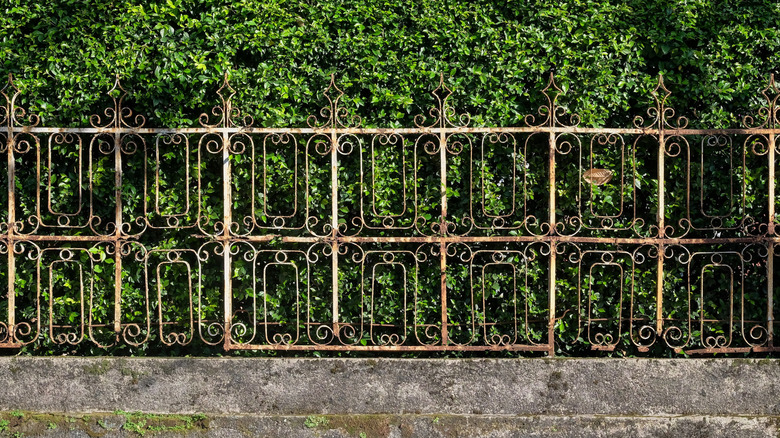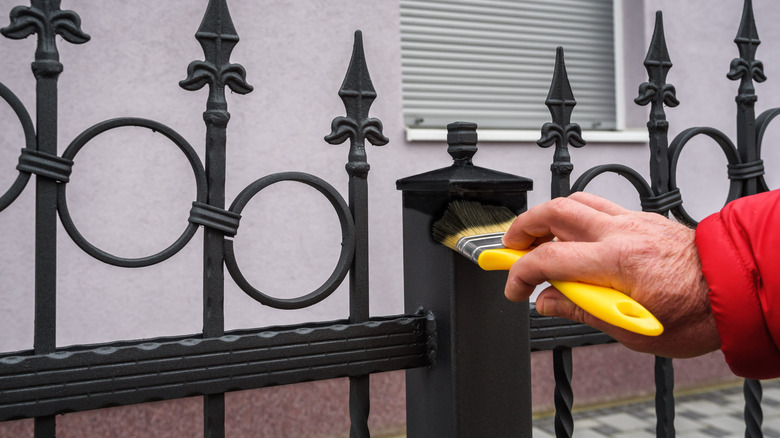The Best Way To Prevent A Wrought Iron Fence From Rusting
Wrought iron fences are usually more expensive than other gates, and it's for a good reason. They are beautiful, durable, and could last a lifetime with adequate care. It's a type of fencing that instantly boosts curb appeal and increases your property value. But to get the most out of your money and enjoy the stunning fence for years, you have to be on the lookout for its biggest enemy — rust. The best way to ensure your fence doesn't succumb to corrosion is to clean it regularly, conduct periodic rust inspections, repaint tarnished areas, and keep away anything that can introduce moisture to your fence.
Yes, it does sound like a lot, but did you think those New Orleans wrought iron balconies, which have been around since the 1700s, stayed intact without proper care? The good thing is that you don't have to do all the maintenance at one time. Monthly inspections will keep you on top of any minimal dirt buildup and rust that can be fixed quickly. Then annually, you can do a thorough fence assessment. It's a similar process to the inspection, but instead of a spot treatment, you're going large-scale, which might require different equipment. Further, it's best to follow any manufacturer's instructions that come with your fence, as one size doesn't always fit all. For example, some iron fences are pre-treated to inhibit rust and might not need painting.
How to prevent rust on your wrought iron fence
With a wrought iron fence, rule number one should always be to prevent prolonged water contact. Lawn sprinklers shooting water at the metal will likely cause rust. Try to set the jets at a distance so they don't interfere with your fence. Even if water does hit the iron, it should be minimal. Further, stack snow and leaf piles away from the barrier as they can also cause rust.
You should clean your wrought iron fence at least once a month, since dirt can have rust hiding underneath it. Then, by the time you notice, it might be too late. To successfully clean wrought iron, simply use a hose to blast water over the entire fence. You'll need a rag and mild soap for stubborn stains, like bird poop or plant sap. However, avoid antibacterial soaps, bleach, and other harsh cleaners as they can damage the metal. It's also best to wash your fence on a warm day when the sun can help air dry it.
Another helpful tip is to inspect the iron every few weeks for rust, preferably on the same day you clean the fence, as the water will expose any corrosion that might have been under the dirt. Pay attention to joints, crevices, and intricate designs because they're more susceptible to rusting. If you do find rust, you'll need to prime and paint that area to prevent further spread. Keep in mind, a DIY job isn't the solution for significant corrosion that has affected your fencing's structural integrity. Leave that to a professional repair service.
Painting and priming your wrought iron fencing
Primer and paint add a layer of protection to your wrought iron by blocking moisture from getting to the metal underneath, thus preventing corrosion. One key tip for painting wrought iron is to remove any rust from the metal before priming. Scraping the rust off ensures that your paint will stick to the fence's surface and last a long time. You can use a wire brush followed by medium-grit sandpaper for smaller tarnished areas, or a sandblaster for large-scale projects. To remove stubborn corrosion, consider a rust converter that will chemically dissolve the decay. Afterward, clean the iron with a damp cloth or hose and allow the fence to dry. Then, apply a rust-inhibiting primer before brushing on the paint.
Oil-based paints offer higher protection from rust and can handle the outdoor elements, but they have longer drying times. Meanwhile, water-based paints aren't as durable, but there are ones with rust-inhibiting chemicals added in that should be able to handle the job. When painting your fence, apply at least two thin coats for adequate coverage, ensuring that the first layer dries completely before adding a second coat. Finally, finish off with an automotive wax for an extra layer of protection against rust that also repels water and dirt.


